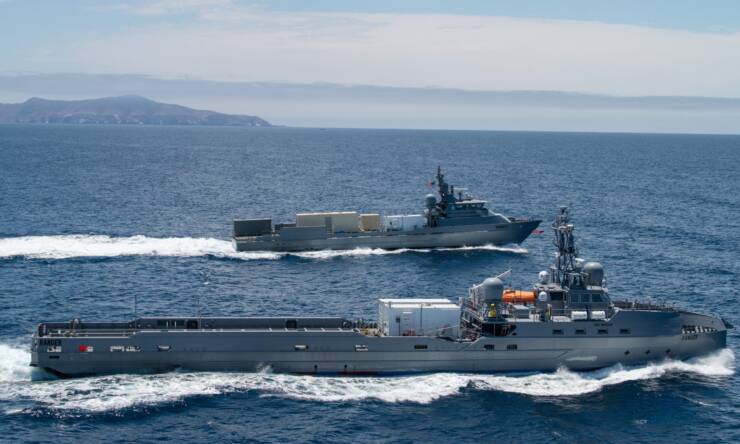
Washington: The Navy wants to hire industry to manage the processes and infrastructure being developed at its autonomy integration lab — presenting at least one contractor an opportunity to become an integral part of the service’s broadening unmanned portfolio.
The Rapid Autonomy Integration Lab (RAIL) is an effort out of the service’s unmanned maritime systems program office. The program will be the “cornerstone” for how the service develops and integrates autonomous capabilities in the future, Capt. Pete Small, Unmanned Maritime Systems program manager, said at the Sea Air Space exposition.
“The vision for the RAIL is that many industry partners … will bring their code to the RAIL,” Small said. Through testing and standardized tools, the government and industry “will integrate those software into a holistic baseline that can then be tested and certified and deployed to a platform.”
In simple terms, the RAIL is going to involve a lot of moving parts, including the fact that different contractors will be bringing in different coding that all needs to coordinate together. The Navy needs someone to be in charge of making sure all the processes are being followed and that testing is done correctly — a job the service has apparently concluded would be best done by industry.
The management role, known as the “autonomy baseline manager,” is intended to be “that support infrastructure to help manage the process, enforce the standards, configuration management, and just overall execution of the development and certification period and software,” Small said.
It’s a wonky role on paper, but whichever contractor — Small did not specify if this would be one or multiple contractors brought on board —lands the gig will have a major opportunity to embed itself into the Navy’s unmanned efforts.
The nuts and bolts of related autonomy efforts and how they will need to fit into a variety of unmanned surface and subsurface vehicles will all be coordinated through the testing done through the RAIL. Yet another layer that all program managers are now contending with is how their efforts will fit in Project Overmatch, the Navy’s piece of Joint All Domain Command and Control.
Although Small only manages the Navy’s upcoming surface and subsurface vehicles, the RAIL will also likely become important to aerial vehicles as well. Two integral unmanned efforts by the Navy — the Common Control System and the Unmanned Maritime Autonomy Architecture — have started in Small’s office and ended up in programs at Naval Air Systems Command.
The RAIL itself, according to Small, will be less a brick-and-mortar facility and more established through a cloud-based network. Some physical spaces will be required for personnel to do the actual coding and integration work, but no decisions have been made on where that presence would be.
Small added that he is coordinating with other similar efforts, such as the program executive office for integrated warfare systems’ software factory, dubbed The Forge, to minimize the overhead cost of physical infrastructure. The service recently conducted an industry day to inform contractors about specific requirements for the autonomous baseline manager contractor.








